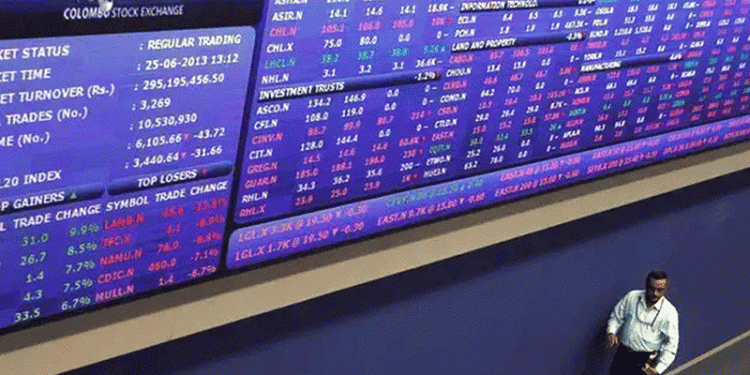By Chikako Mogi
TOKYO (Reuters) – Asian shares were capped on Monday as investors took profits from recent highs in the face of uncertainty over how much longer the current U.S. stimulus would continue, and data underscoring the fragility of China’s economy.
Investors will scrutinize more data this week from the United States for clues to growth and demand prospects in the world’s largest economy.
Speculation over whether and when the U.S. Federal Reserve would start scaling back its current massive bond-buying program emerged following a string of positive American data and was the catalyst for corrections across markets which had drawn strong support from the Fed’s largesse.
Reports showing Chinese growth was failing to pick up momentum gave no reason for a turnaround from soft sentiment.
China’s factory activity shrank for the first time in seven months in May as both domestic and external demand softened, while activity in the services sector also slipped, pointing to slowing momentum in the world’s second-largest economy.
“We still cannot see any signs of recovery but the chances of any sharp slowdown are also small,” said You Hongye, an economist at China Essence Securities in Beijing.
These reports followed an weekend release that showed China’s official PMI rising to a more-than-forecast 50.8 in May from 50.6 in April.
ANZ said in a commentary that this single indicator did not change its view on China’s softening economic condition.
“Structural reforms are needed in order to help sustain the growth prospect … inconsistent data will continue to complicate China’s economic policy making and potentially impair the judgment of policymakers,” the Australian bank said.
MSCI’s broadest index of Asia-Pacific shares outside Japan <.miapj0000pus> was pressured, after earlier giving up as much as 0.2 percent to its lowest in nearly seven weeks. A fall this session would mark a fourth straight day of declines. The index ended May down 4.7 percent for its worst monthly performance in a year.
Australian shares <.axjo> stabilized, up 0.1 percent after falling on Chinese data. Hong Kong shares <.hsi> were up 0.4 percent but slightly trimmed gains while Shanghai shares <.ssec> also lost some of its early gains to inch up 0.1 percent.
Even Japan’s Nikkei stock average <.n225>, which has outperformed the Asian bourses, eased, falling as much as 2.8 percent to a six-week low earlier in the session. <.t>
Reflecting heightening investor nervousness, the CBOE Volatility index <.vix>, which measures expected volatility in the Standard & Poor’s 500 index <.spx> over the next 30 days, hit a six-week high on Friday.
The Standard & Poor’s 500 Index <.spx> posted consecutive weekly losses for the first time since November as investors took some money off the table after the index rallied 14.3 percent, the best first five months of the year since 1997, and ended May up for the seventh straight month of gains – its longest streak of monthly gains since 2009.
“The Federal Reserve’s willingness to alter the pace of purchases sooner than markets had previously expected has meant that markets remain attuned to the incoming data flow in the U.S.,” Barclays Capital said in a research note.
The May ISM manufacturing index is due later in the session and the more important monthly nonfarm payrolls data is due on Friday. The Fed has said it would keep up the stimulus campaign until the employment situation improved.
Data on Friday showed U.S. Chicago Purchasing Managers Index rose far more than expected in May, fanning worries about the Fed slowing its bond purchases later this year and sending U.S. Treasury prices lower on Friday, capping the worst month for the market in nearly 2-1/2 years.
Some cautioned about prematurely factoring in the possibility of the Fed’s tapering.
“The idea of early tapering of QE is still some time away – inflation is still low and the Fed has to get it a little higher. We are overweight equities and advising anyone who is short equities to square positions,” said Gary Dugan, Chief Investment Officer, Asia & Middle East, at Coutts.
The dollar rose 0.3 percent to 100.66 against the yen, off a three-week low of 100.22 on Friday. The dollar index <.dxy>, measured against a basket of six key currencies, was down 0.14 percent after touching a three-week low on Thursday.
U.S. crude futures fell 0.2 percent to $91.76 a barrel and Brent fell 0.3 percent to 100.06.
Amid global equity market corrections spurred by concerns over the Fed’s stimulus outlook, equity funds tracked by EPFR Global recorded collective outflows of $2.79 billion during the week ending May 29 as retail redemptions hit a year-to-date high while bond funds attracted $1.37 million, their second lowest total of 2013.
China industrial output/PMI: http://link.reuters.com/qaf92t
Asia PMIs: http://link.reuters.com/maz35s
^^^^^^^^^^^^^^^^^^^^^^^^^^^^^^^^^^^^^^^^^^^^^^^^^^^^^^^^^^^>
(Additional reporting by Xiaoyi Shao, Jonathan Standing and Kevin Yao in Beijing and Umesh Desai in Hong Kong; Editing by Eric Meijer)
Source: Reuters


























